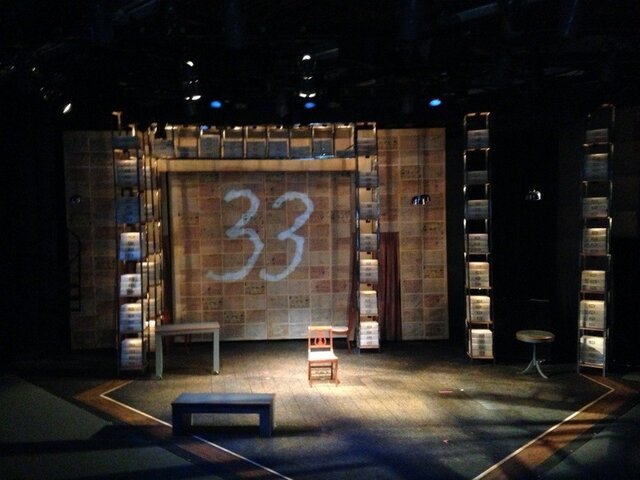The two main schools of thought for projection design are 1) concept based - where the design drives the technology or 2) technology based - where you have a list of gear and your design must fit within those parameters. So, by you deciding that you want to jump into projection head first by purchasing equipment, you are essentially saying, this is what we always want to do. This is not wrong, but without having a background in this type of design, then you are limiting how you can grow. I like analogies, so here's one for you. If you were learning how to drive, would you immediately go for the sports car because, wow, it looks cool and you will look cool in it? Would you prefer to borrow or rent several types of cars to see what truly fits your style? After all, what if you want to go camping? It would be more difficult to take the sports car down the rutted dirt
road. After you have learned what is most versatile and best performing for the types of productions you do, then it might make sense to
purchase.
That being said, there is a benefit to purchasing some of the equipment up front. If you plan on using the projection equipment often throughout the year, then budget-wise it makes more sense to
purchase some of it up front. This is where you need to know how to deal with the salesmen. I agree that purchasing used will have its benefits up front. You will get more bang for your buck, but you will be taking risks. First off, I recommend that you
purchase from a
reputable dealer and avoid craigslist or eBay (unless that is the
outlet for a reputable dealer). Do your homework first by checking out various sources of information on projectors, screens, and various other components by using the sources in the
wiki. By buying used and sourcing resources that your school may already have, you can definitely get started (though you will probably make some concessions in your design).
LCD projectors will set you back less than their
DLP counterparts. However, an
LCD has a shorter lifespan before needing service due to how it is maintained and how it processes the light. Check out my article on
projector maintenance for once you own the equipment.
Things you need to consider for your design: Content (will you create it,
purchase stock footage, or hire out the design, what format will it be in - codec and container), the
driver for your content (media player, DVD,
media server, tape), distribution of content and control (dual-head or triple-head-to-go, DAs, cable,
router,
switcher,
etc), display (
projector,
screen/surface,
monitor), and if there is a need for networking equipment.
When considering content, if you have previously purchased the display devices, then you would be remiss to create or
purchase content that would not optimally display on the gear you own. Obviously, you need to create content that can be used by your playback devices. Certain media players and servers will require a specific format as will optical players. You will ideally want the same
aspect ratio and resolution for your content as the native resolution of your
projector (or of your extended display if you are
edge blending). Every time part of your equipment needs to digitally alter the
image, you will lose some clarity.
For playback, you don't need to jump right into a
media server. It really depends on how you intend to control your content and how much you intend to warp/blend it. You may be able to get by with
PowerPoint or some of the free playback software (you want a dedicated computer for this). Remember, when you are creating your content, it does not need to
play back in a standard
screen format. You have the option to only show a portion of your
image (front projection will still have video black where you aren't having an
image). So, even though you have a wide
cyc, you do not need to fill that with a single or blended
image. If you have two or projectors, one which is SL, one SR, and possibly one C, then the set pieces can
cover other portions of the back
drop while the open area shows the scenic
element being projected. This could potentially help with your light
bounce.
As has been mentioned, where you plan on mounting the
projector and how to get a signal to it is a large part of the design process. Part of the challenge with purchasing used projectors is that you will have more difficulty in having a blending the
image due to difference in wear. Also, the some older projectors will have a greater limitation on how they can be positioned (portrait mode is relatively new in being supported by the manufacturers). You may not have enough tilt to get your
image from an onstage
batten. If you can
throw the
image from front of
house, then you will need a long
throw lens, which is less likely to come with a used
projector and will easily cost an extra $3500-4000. However, some of your cabling issues will likely be solved by the shorter runs to your source!




